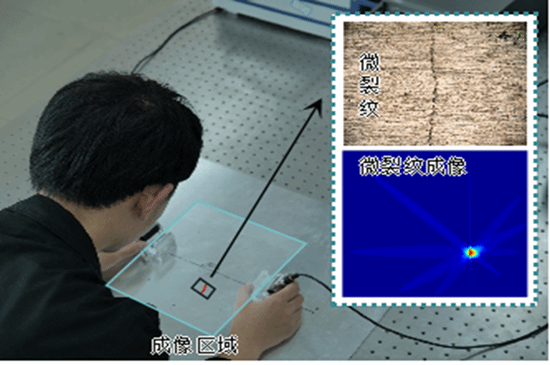

Common types of airplane damage. [Photo/en.xmu.edu.cn]
Regular inspections of airplanes are essential to mitigate potential damage caused by complex flight environments and long-term use. A nonlinear ultrasonic testing technology, independently developed by the major equipment health management technology research team at Xiamen University (XMU), enables more precise and non-destructive detections of potential defects.
The team, led by Professor Li Weibin from XMU's School of Aerospace Engineering, has conducted extensive research over the past few years, focusing on in-service safety testing of aircraft and their key components.

A researcher uses nonlinear ultrasonic testing technology to detect microcracks in metal structure. [Photo/en.xmu.edu.cn]
Conventional ultrasonic testing requires dismantling parts of the airplane to inspect for significant structural damage, risking damage to the airframe and failing to provide accurate and effective detection of minor defects.
This nonlinear ultrasonic testing technology offers much higher sensitivity, emitting different ultrasonic waves to target and monitor early-stage or minor damage, thus helping to identify potential risks and ensure flight safety.
It has been adopted in many emerging industries, including battery detection in new energy, silicon wafer quality inspections in microelectronics and semiconductors, and advanced manufacturing.
"This technology will be integrated with artificial intelligence to enable more autonomous detection, more comprehensive analysis and operation under extreme conditions, contributing to human safety and progress across various industries," said Li.